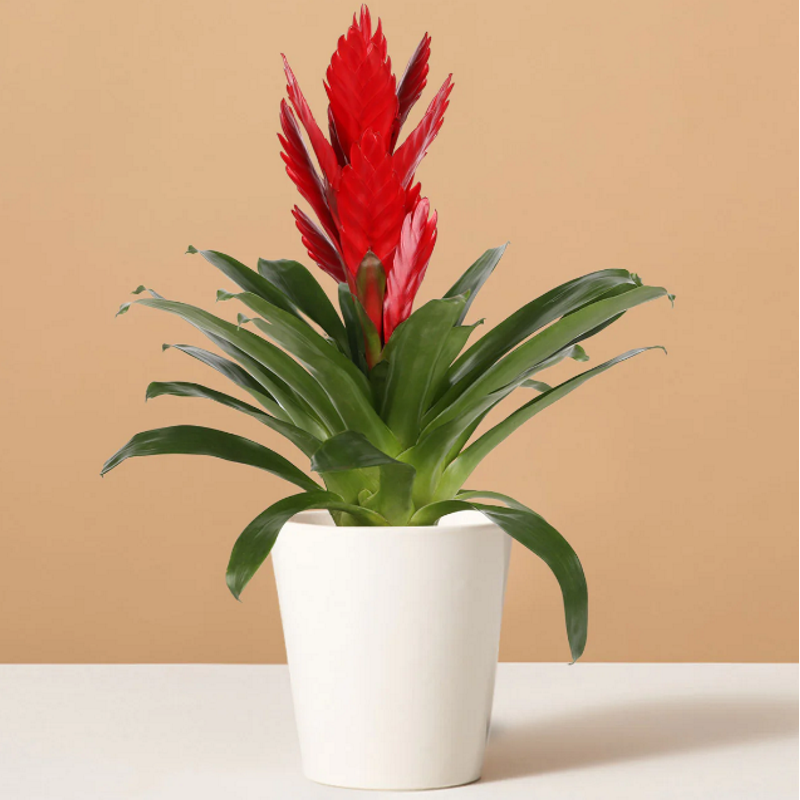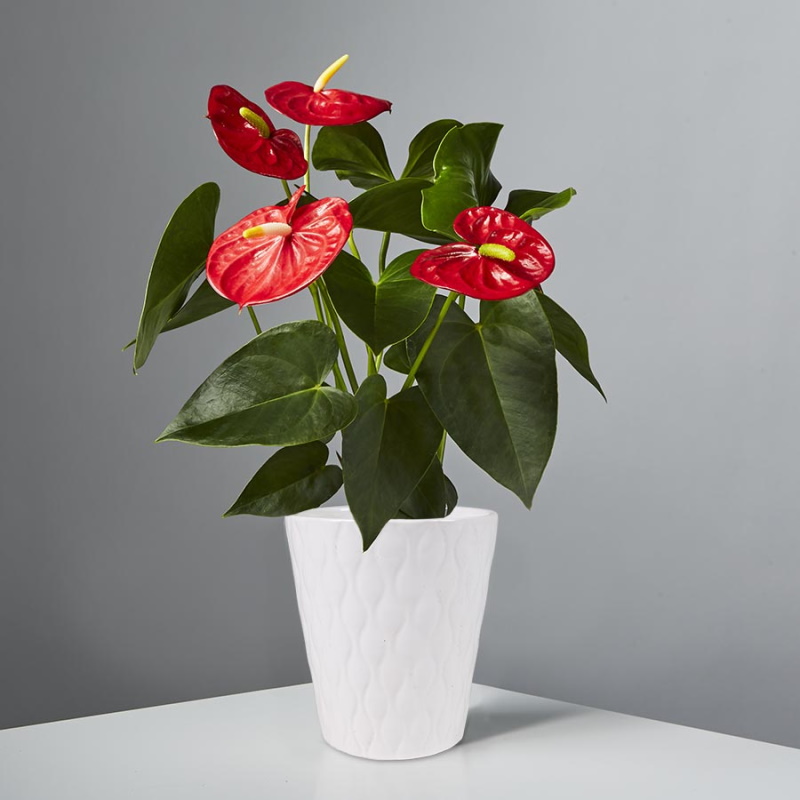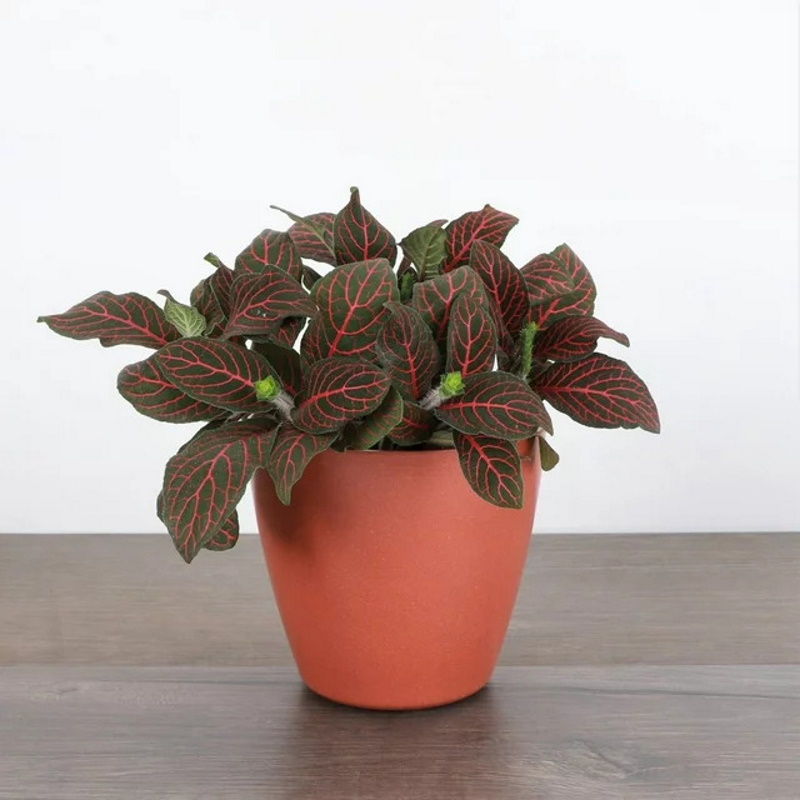Best red houseplants – 7 energizing indoor plants
Psychologists share how red indoor plants can boost energy levels and motivation

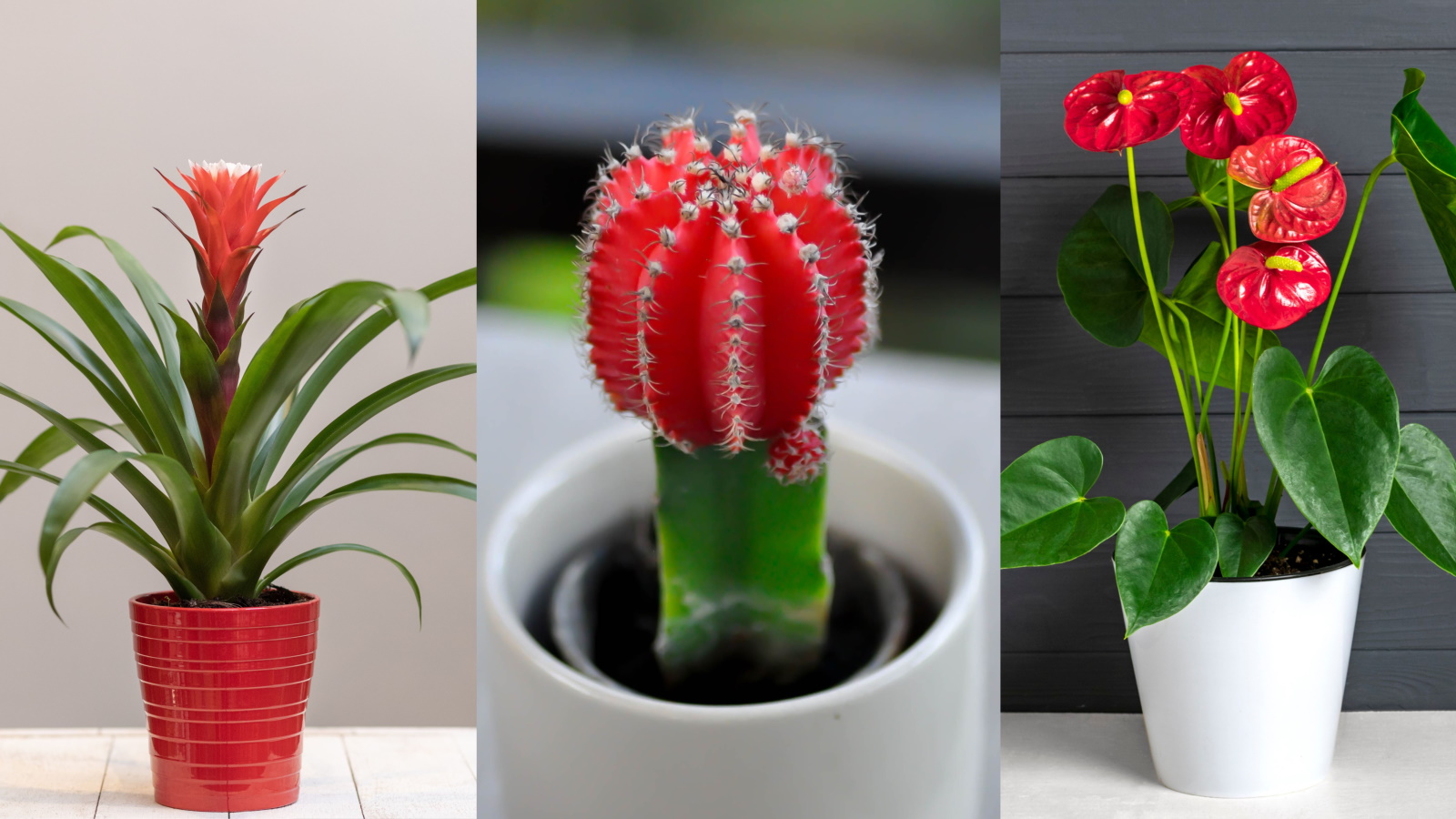
It's no secret that indoor plants can improve our wellbeing. Whether its helping with sleep or purifying the air, plants have been proven to help us out in more way than one.
We already know that blue houseplants can evoke calm feelings, but did you know red houseplants can help boost energy?
'Among the myriad hues that influence our psyche, red stands out as a potent force, capable of evoking a range of intense sensations,' says Dr. Deborah Gilman, a psychologist at Fox Chapel Psychological Services. 'Psychologically, it is associated with traits such as energy, strength, and determination,' she adds.
We've spoken to experts to find out more about how decorating your home with plants that are red can have an energising effect, and which red houseplants are the best to achieve this look.
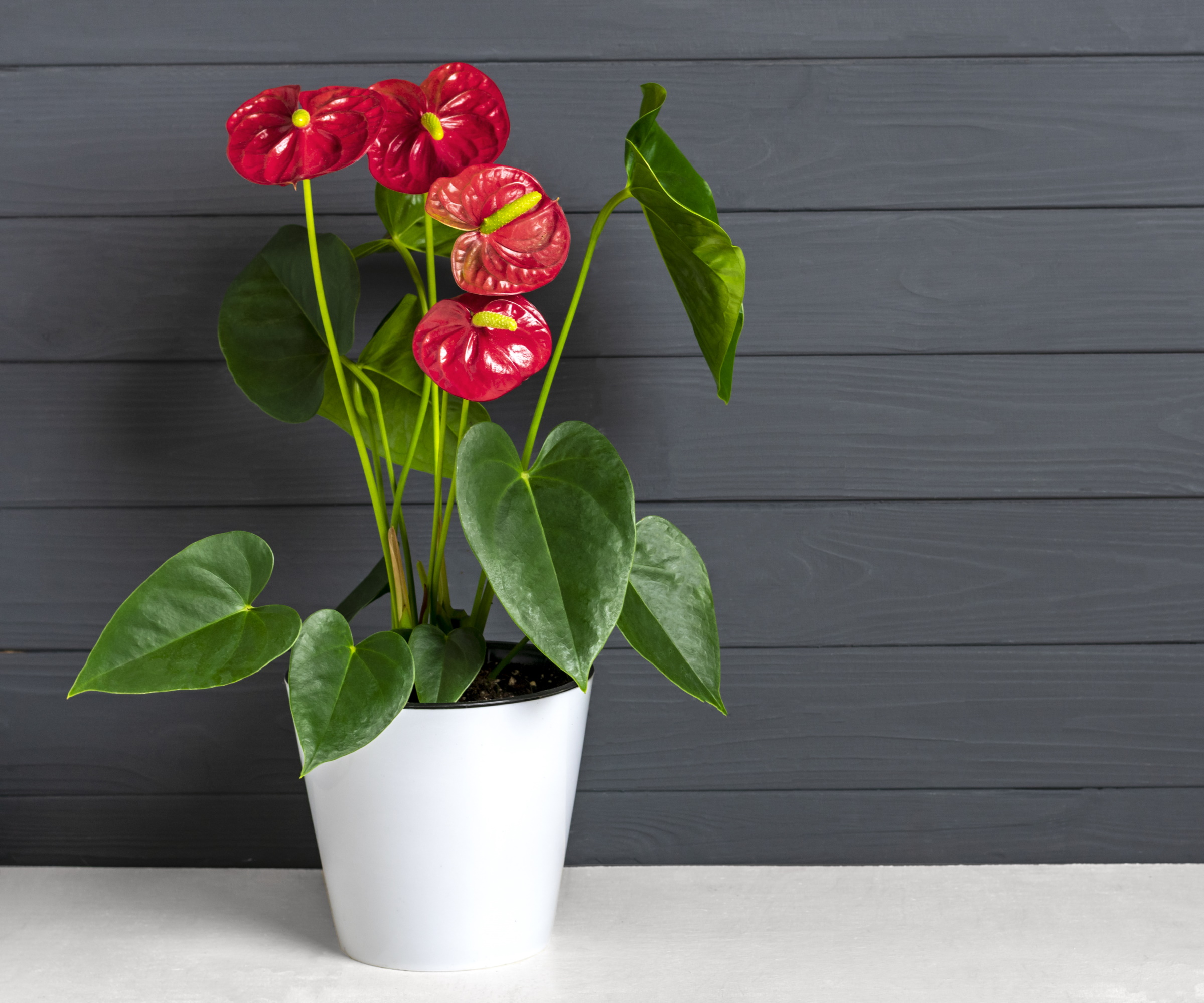
Why is red an energizing color?
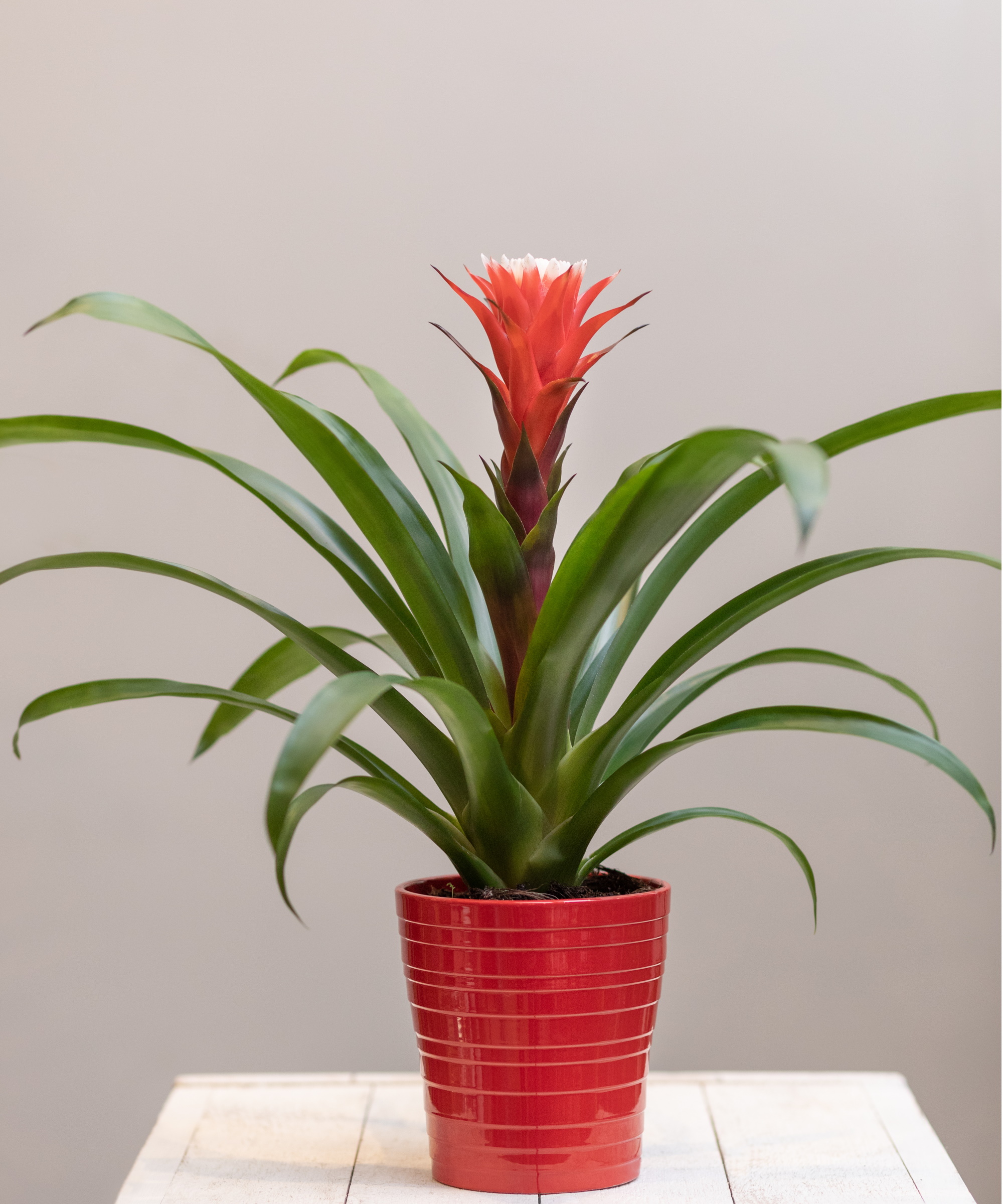
In color psychology, red is a potent color that can have a strong impact on us.
'The sight of red stimulates the autonomic nervous system, increasing heart rate and blood pressure, and instilling a sense of urgency and excitement,' says Dr. Gilman.
It has a history of being linked to primal instincts, too, often used to indicate danger. 'These associations have left an indelible mark on the human psyche, imbuing the color red with a sense of power and vitality,' Dr. Deborah Gilman adds.
Design expertise in your inbox – from inspiring decorating ideas and beautiful celebrity homes to practical gardening advice and shopping round-ups.
Incorporating red into our homes can therefore leave interior spaces feeling energized.
'In the context of home décor, incorporating red elements, such as houseplants with red leaves or flowers, can energize a space, making it feel more dynamic and lively,' says Niloufar Esmaeilpour, a clinical counsellor and founder of Lotus Therapy & Counselling Centre.
Using red houseplants in spaces where energy and motivation is most needed can be a productive choice, such as a home office.
'It's also essential to consider balance and harmony in interior design,' says Niloufar. 'Too much red, or very bright shades, might become overwhelming or create a sense of restlessness, especially in areas meant for relaxation like bedrooms.'
Recently, the unexpected red theory has taken TikTok by storm as many people are choosing to have one statement red item in a room where you might not expect it. It can leave the space leaving uplifted and choosing a red houseplant might just be the perfect way to achieve this.

Dr. Gilman is a licensed psychologist, child specialist, coach, and dynamic speaker. She has special expertise working with children, adults, families, schools, businesses, communities, and other organizations impacted by trauma. Dr. Gilman's trauma-informed services are built on the best evidence available to promote engagement, empowerment, and collaboration.

Niloufar Esmaeilpour is a registered Clinical Counsellor with the BC Association of Clinical Counsellors and the founder of Lotus Therapy & Counselling Centre located in Vancouver, Canada. Niloufar brings forth a profound wealth of experience and an unwavering commitment to assisting individuals along their journey towards healing and overall wellbeing.
Best red houseplants
When choosing which houseplants to have in your home, it's important to take color into consideration. Red indoor plants can energize your space, as well as being beautiful to look at. We've compiled an expert list of the best red houseplants to leave your home feeling uplifted.
Red moon cactus
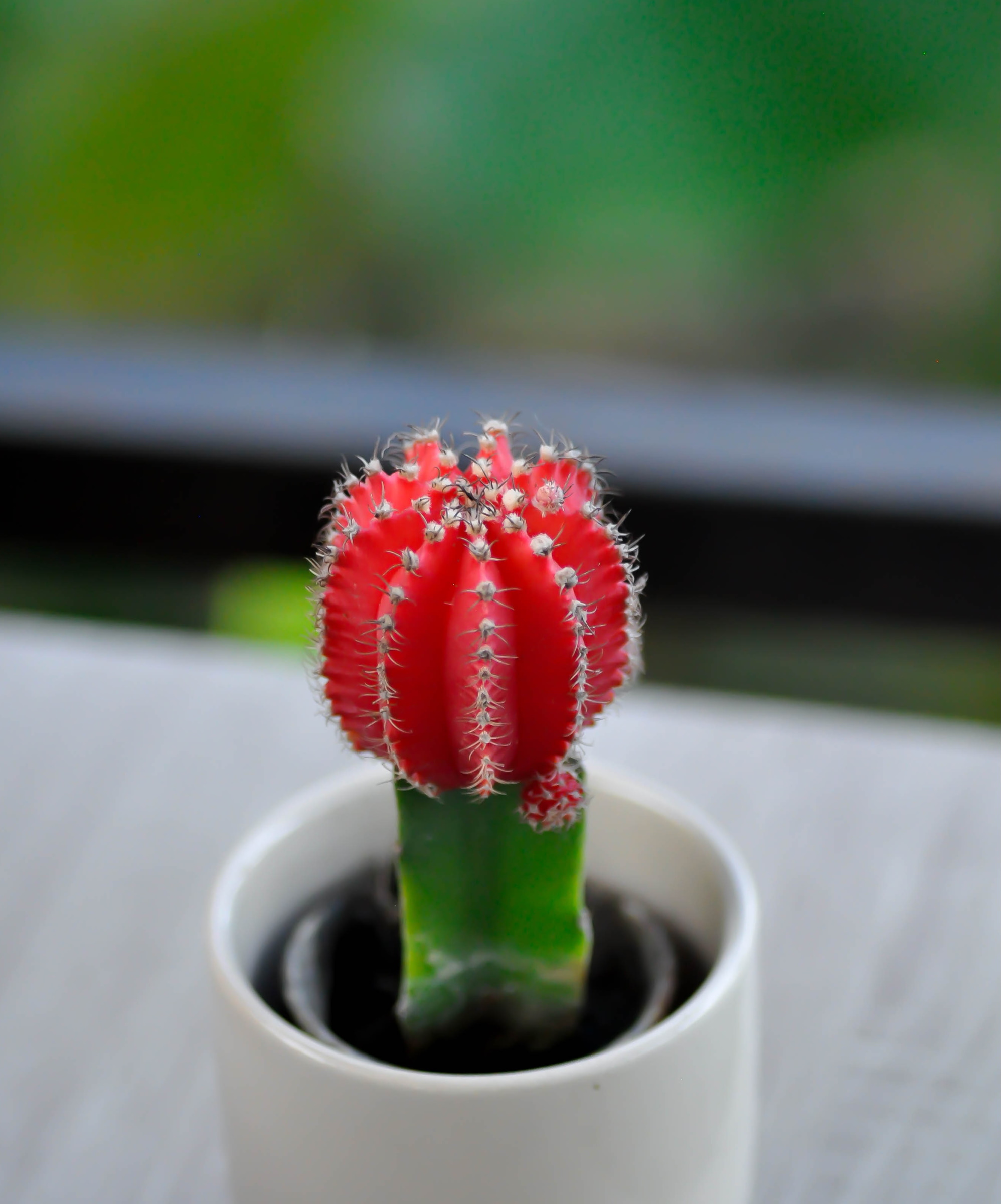
If you're a lover of unusual and quirky cacti and succulents, a moon cactus is a must. These striking cacti come in a range of colors and have an interesting science behind their vibrancy.
'The red coloration is not actually long-lasting on it own but rather a result of grafting,' says Andy Burde, houseplant expert at the House Plant shop.
The bright spherical tops of these cacti gain their color from their lack of chlorophyll. This means they aren't able to survive long on their own because they aren't able to absorb and convert light energy into chemical energy.
As a result, moon cacti are grafted onto green cacti, allowing them to thrive.
Moon cactus, also known as Gymnocalycium mihanovichii, are quite low-maintenance, as long as they have plenty of bright light and aren't watered too frequently.

Andy is a horticulturist and houseplant expert with HousePlantShop.com. With years of experience in plant care, propagation, and interior gardening, he specializes in nurturing healthy, vibrant houseplants and advising enthusiasts on best practices. His focus is on sustainable and practical methods that cater to both beginners and advanced plant lovers.
Red anthurium

It's not surprising that anthuriums have remained popular among houseplant lovers for a long time. They are among the best indoor flowering plants and have bright blooms that will flower all year round.
Although commonly called flowers, the red foliage on these plants are actually modified waxy leaves called 'spathes.'
'Known for its glossy red spathes, anthuriums add a touch of exotic beauty to any space,' says Andy. 'It thrives in bright, indirect light and enjoys consistent moisture,' he adds.
These plants are native to central America, northern Argentina and parts of the Caribbean where they enjoy higher humidity levels. It can be a good idea to replicate this environment in your home for it to thrive, like using this humidity tray from Amazon.
Red polka dot plant
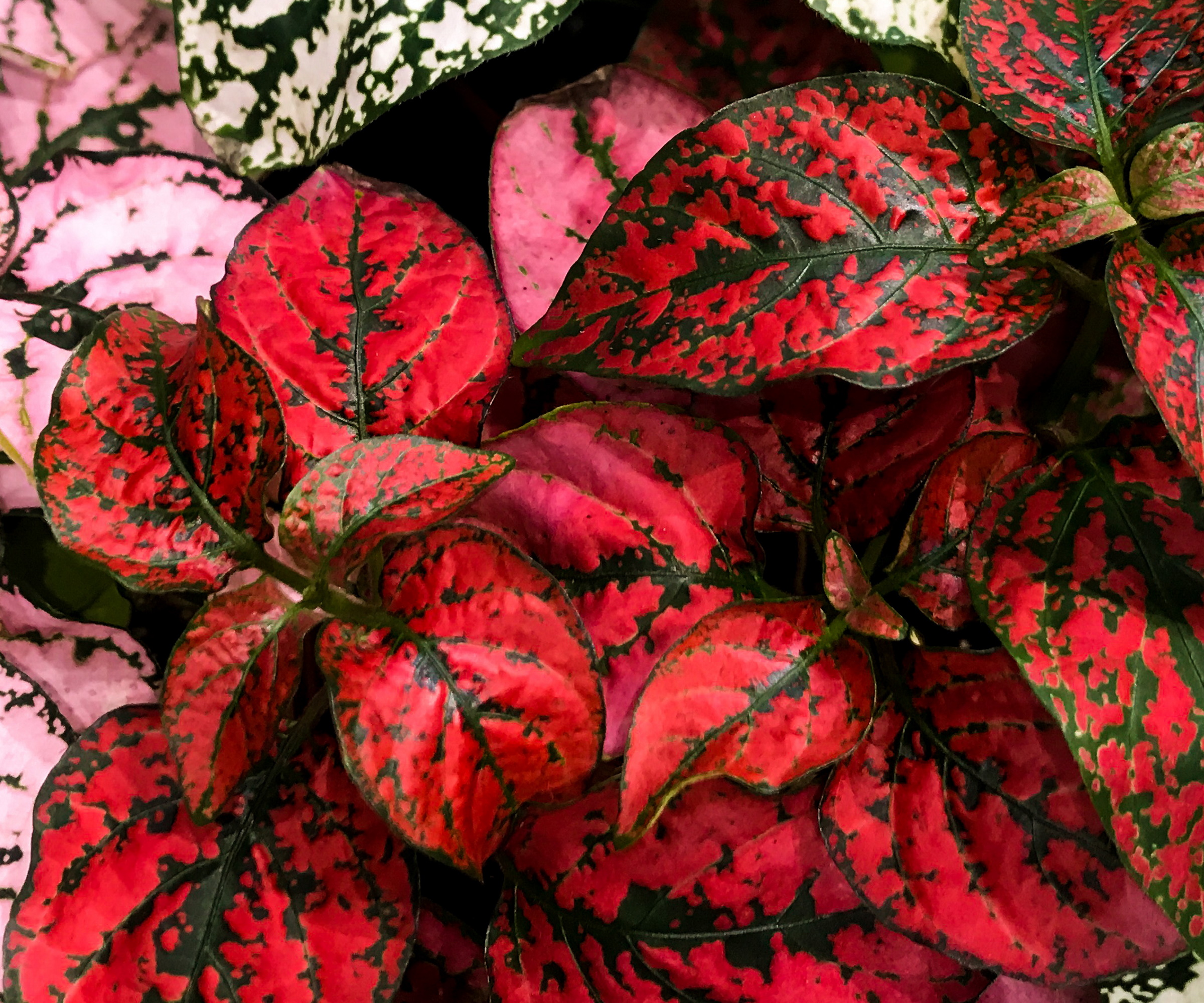
If you love small houseplants or are looking for a more subtle touch of red, the compact polka dot plant is a great choice.
Also known as Hypoestes phyllostachya, these plants grow only around 11 inches tall and are perfect for filling a spot on a windowsill or shelf.
'With charming red-speckled foliage, red polka dot plants are delightful additions to indoor gardens,' says Andy. 'Its botanical name, Hypoestes phyllostachya, actually means 'under the web-like spikes,' referring to the plant's flower spikes.'
Take care to provide these plants with sufficient bright, indirect light because failing to do so could result in a lack of color on new growth.
Fittonia 'Red Tiger'
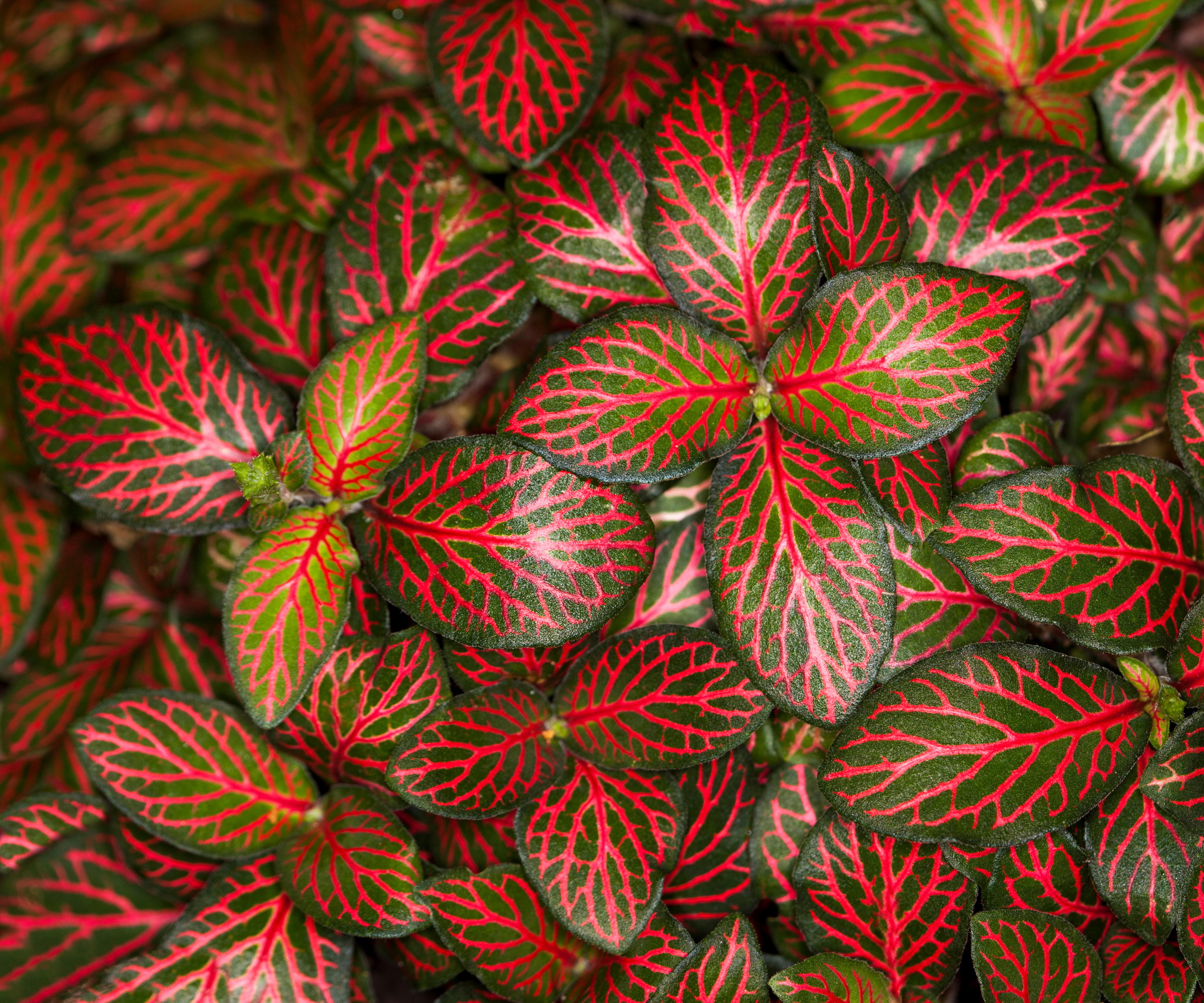
Often mistaken for a polka dot plant, fittonias are equally small and compact with striking, colorful foliage that does all the talking.
They are tropical to south American rainforests where they grow low to the ground. They don't mind being in a low-light position and are guaranteed to brighten up shadier spots in your home.
'The 'Red Tiger' fittonia showcases striking red veins against a backdrop of green foliage,' says Andy. 'Fittonias are also known as nerve plants due to the intricate vein patterns on their leaves,' he adds.
Like other tropical indoor plants, fittonias enjoy higher humidity levels, so it can be a good idea to use something like this mister from Plants.com to keep humidity high.
Begonia 'Red Heart'
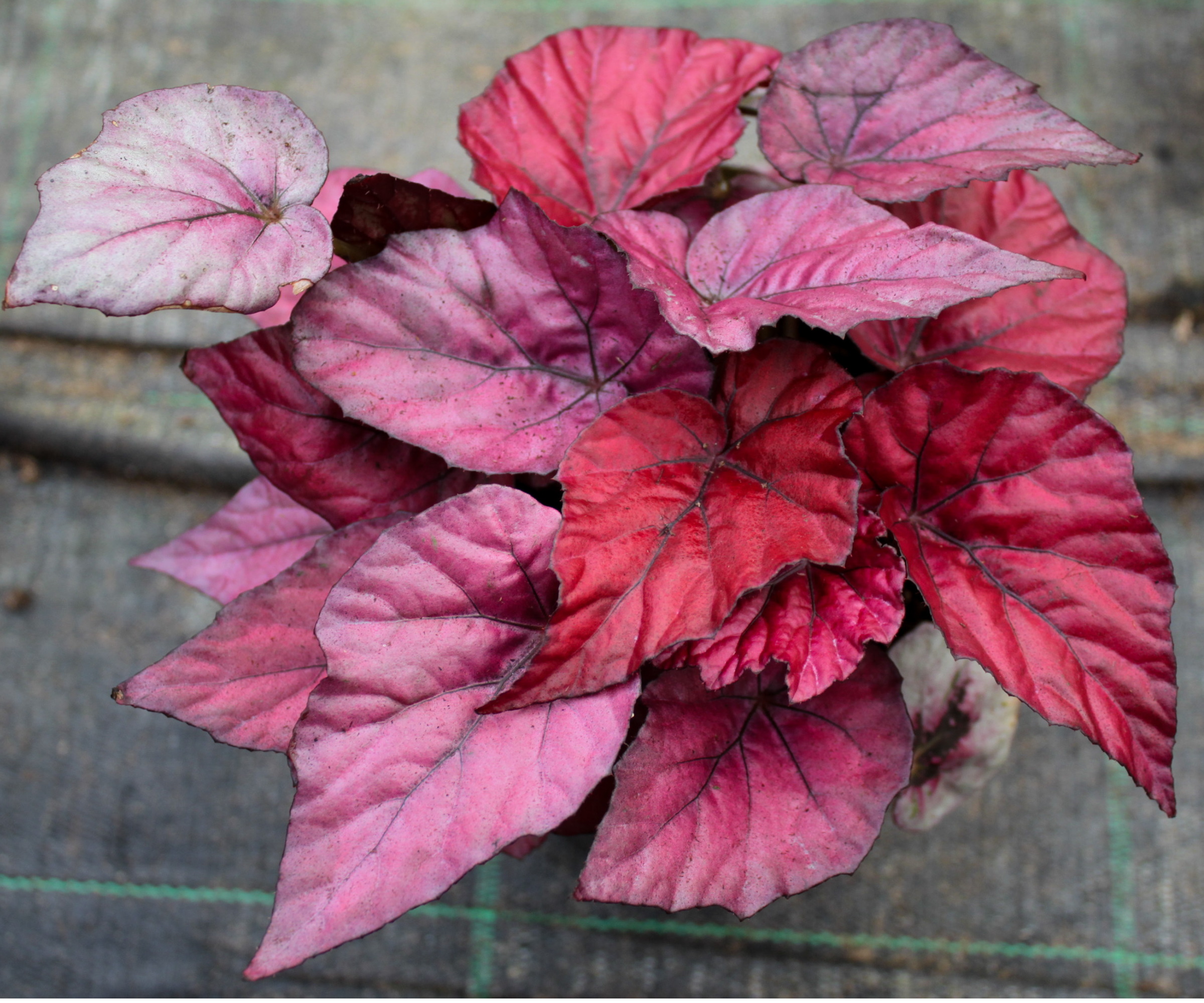
For something a bit leafier, begonias can bring interesting structure to indoor gardens.
These houseplants are popular for their lovely heart-shaped leaves. Many varieties also offer blowsy blooms in a range of shades and they can also be grown outdoors in US hardiness zones nine and 10.
The begonia 'red heart' is a bold plant with eye-catching foliage that is certain to be a conversation starter among your visitors.
'Begonias are often called 'fancy-leaf' due to their ornamental foliage,' says Andy. 'It appreciates moderate to bright indirect light and regular watering to keep the soil lightly moist,' he adds.
They're also very easy to propagate through stem cuttings and division, so you can have more of these statement plants in your home.
Red bromeliad
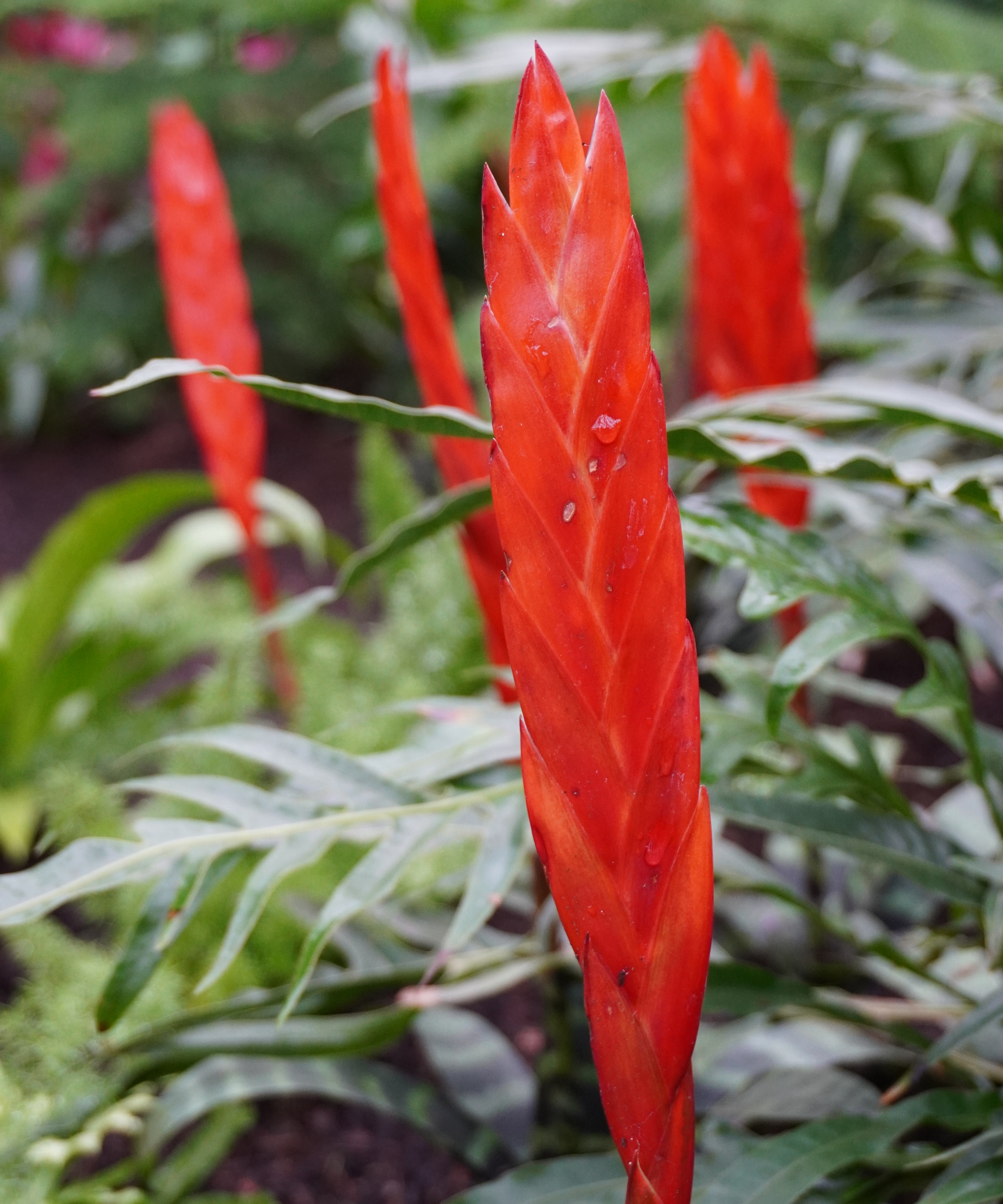
Bromeliads are unique exotic plants that produce striking flowers of varying shapes and colors. Red bromeliads are often the most popular varieties as houseplants, including guzmanias and aechmeas.
'Characterized by vibrant red bracts, red bromeliads add a tropical flair to interiors,' says Andy. 'Fun fact: Bromeliads are epiphytic, meaning they naturally grow on trees rather than in soil in their native habitats,' he adds.
Bromeliads can be found in rainforests of central and southern America. There are more than 3000 species but not all can be grown as houseplants.
To keep that pop of red bright, it's essential to give your bromeliad plenty of natural light, high humidity and warmth. Although, most bromeliads only flower once so don't be disheartened when blooms don't return.
Aglaonema 'Cherry Baby'
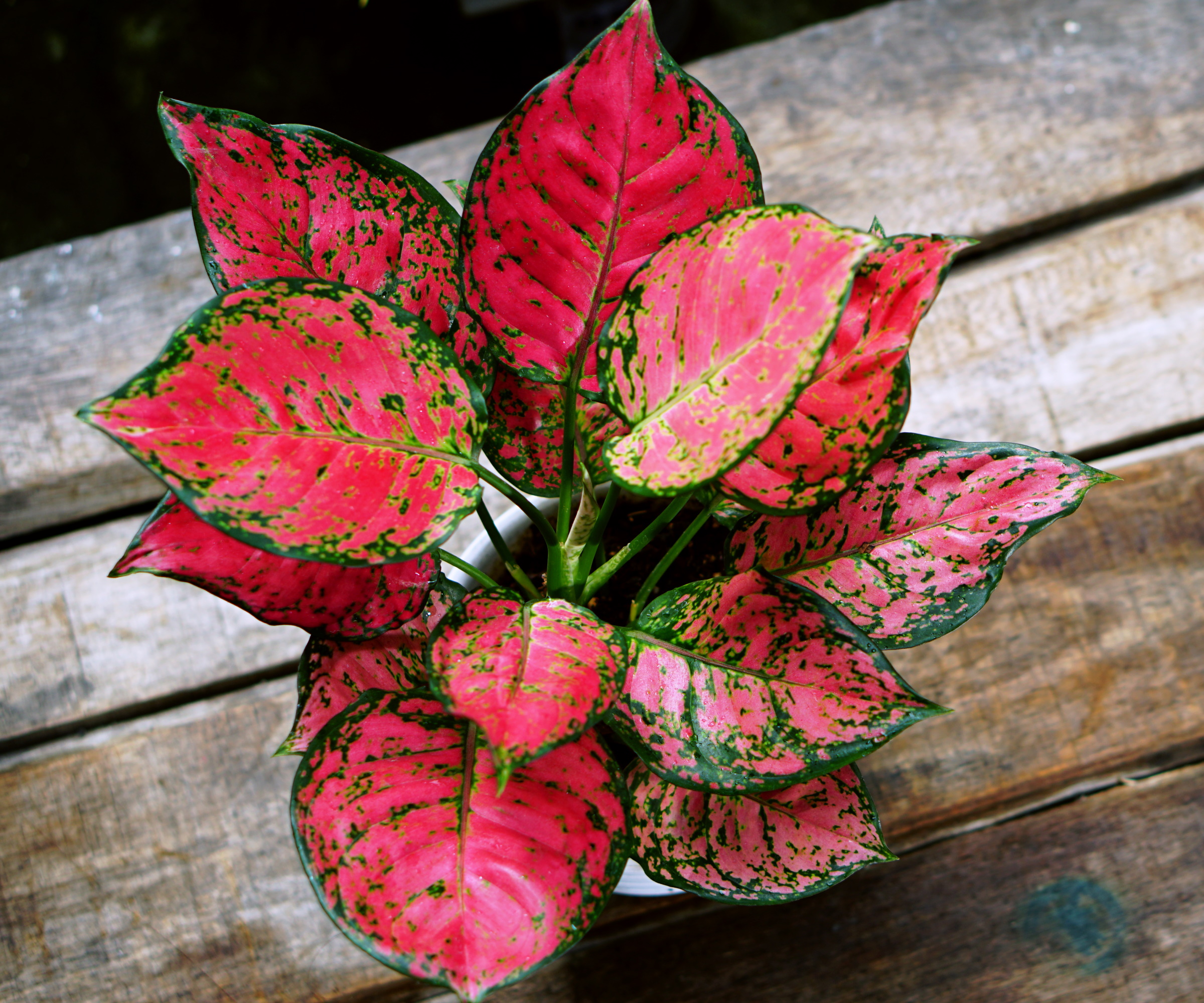
Chinese evergreen plants, also known as aglaonemas, are a staple for houseplant displays. They have unique variegated leaves that heighten interest and add a jungle-feel to your home.
There are so many varieties of these plants but Aglaonema 'Cherry Baby' arguably packs the most punch in color.
'It thrives in low to moderate light and requires infrequent watering. They're also known for their air-purifying qualities,' says Andy.
These plants are native to subtropical regions of Asia and will grow around 25 inches tall, making it ideal for fitting in smaller spaces.
Take care not to overwater aglaonemas as they will quickly tell you something is wrong with drooping and yellowing foliage.
Shop red houseplants online
FAQs
What other color plants evoke energizing feelings?
Red houseplants can energize spaces in our homes, but it isn't the only color to do this.
'Yellow, the color of sunshine, radiates positivity and optimism. It's associated with feelings of joy, happiness, and warmth,' says Dr. Deborah Gilman, a psychologist at Fox Chapel Psychological Services.
Yellow indoor plants can therefore also have uplifting impact on interiors. Examples include cut flowers like daffodils, yellow fittonias and yellow orchids.
Psychology tells us that the color red can energize and motivate us, often originating from primal instincts. Choosing to have red houseplants in your home can positively uplift your space, as well as adding bright and beautiful houseplant interest. If you want to know more about how indoor plants can bring positive energy to your home, you may find this list of feng shui plants interesting.

Tenielle is a Gardens Content Editor at Homes & Gardens. She holds a qualification in MA Magazine Journalism and has over six years of journalistic experience. Before coming to Homes & Gardens, Tenielle was in the editorial department at the Royal Horticultural Society and worked on The Garden magazine. As our in-house houseplant expert, Tenielle writes on a range of solutions to houseplant problems, as well as other 'how to' guides, inspiring garden projects, and the latest gardening news. When she isn't writing, Tenielle can be found propagating her ever-growing collection of indoor plants, helping others overcome common houseplant pests and diseases, volunteering at a local gardening club, and attending gardening workshops, like a composting masterclass.
